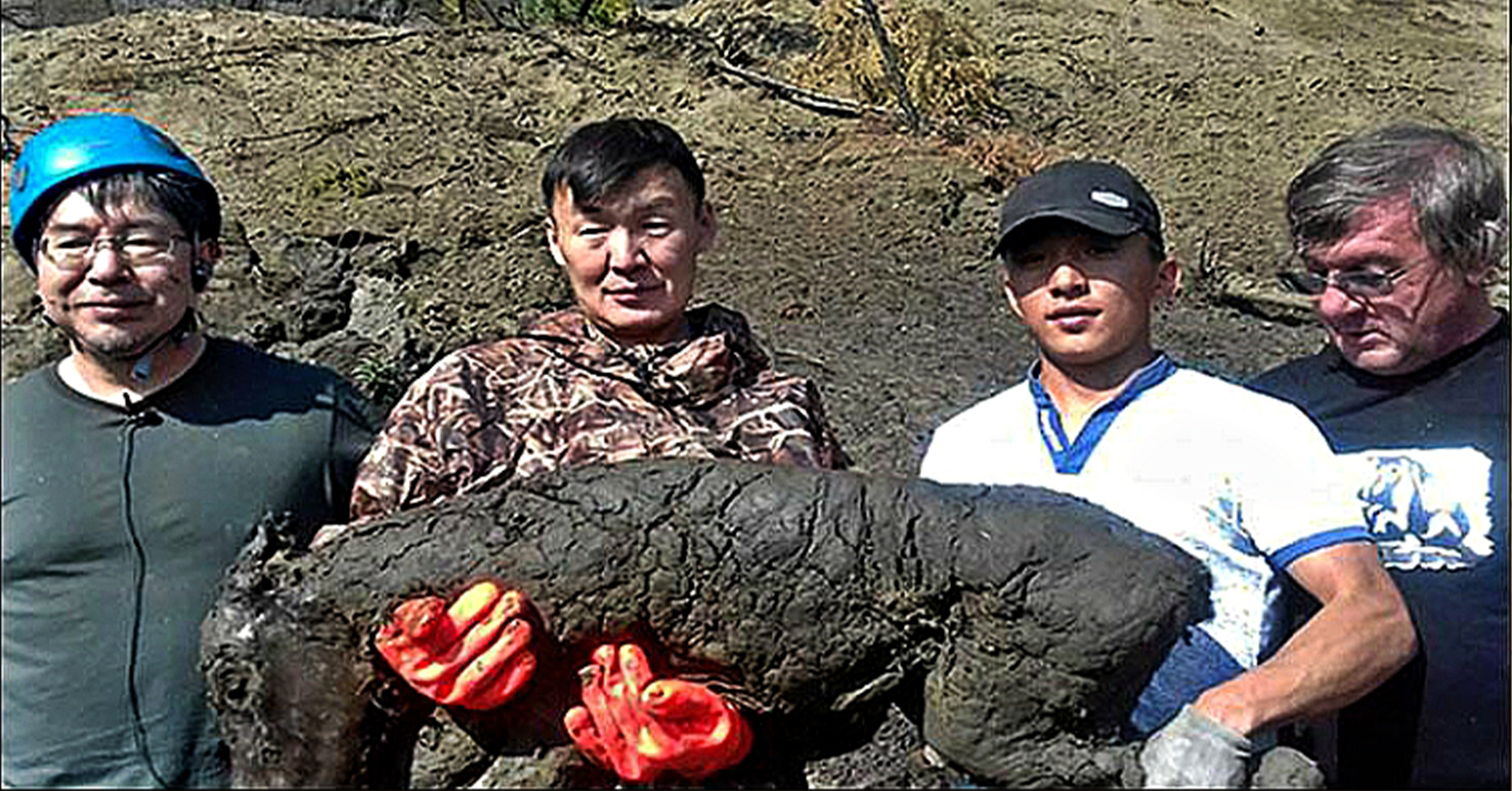From the Lena horse species that is now extinct, the young horse is 37 inches tall and was only two months old when it perished. Scientists dug it from its icy grave in the Batagai depression or crater – nicknamed the ‘Mouth of Hell’ – earlier this month.

The prehistoric foal is part of a breed of extinct horses dubbed the Lenskave or Lena horse. Scientists stumbled across the immaculately preserved youngster when they were working on the remains of ancient woolly mammoths. The animal probably died by falling into a ‘natural trap’, possibly drowning in a melting ice pool.

The foal has completely preserved dark-brown hair, tail and mane, and all internal organs. There were no visible wounds on its body. It was found by accident and was in excellent condition when discovered. Analysis proved it was an extinct species and had been trapped in the permafrost for around 40,000 years.

Locals in the remote Yakutia region see this spectacular crater as superstitious and call it “the gateway to the underworld”. According to local scientists, the gash in the tundra was caused by the Soviets, who cleared the forest here, but it is now being enlarged and shaped by climate change. The young horse was buried at around 100 feet (30 meters) in the tadpole-shaped depression, a “mega slump” one kilometer long and around half a mile (800 meters) wide.
The modern- day Yakut horse is the hardiest in the world, surviving temperatures of minus 60°C (-72°F) in the blistering Siberian winters. The earlier breed populated Yakutia between 30,000 and 40,000 years ago. Also, the foal was completely preserved by permafrost. But the late Pleistocene age fauna with woolly mammoths and Lenskaya horses was vastly different to today because the extinct Lenskaya Horse looks similar to the horses that roam the region today, but are not genetically related to the modern-day inhabitants.”
day Yakut horse is the hardiest in the world, surviving temperatures of minus 60°C (-72°F) in the blistering Siberian winters. The earlier breed populated Yakutia between 30,000 and 40,000 years ago. Also, the foal was completely preserved by permafrost. But the late Pleistocene age fauna with woolly mammoths and Lenskaya horses was vastly different to today because the extinct Lenskaya Horse looks similar to the horses that roam the region today, but are not genetically related to the modern-day inhabitants.”
